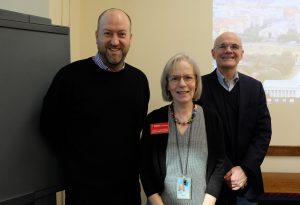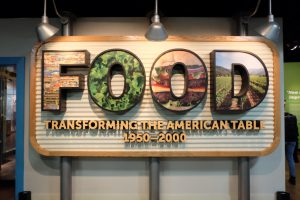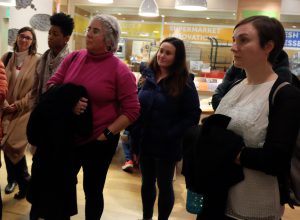By Professor Tiffany Banks On Tuesday, September 30th , students from my COMM 108: Foundations…

On February 28, our museum seminars got underway with the Opening Panel, once again hosted at the National Museum of American History (NMAC). The afternoon began with introductions as Philippa Rappaport, Manager of Community Engagement, Smithsonian Center for Learning and Digital Access (SCLDA) and liaison to the Montgomery College-Smithsonian Faculty Fellowship welcomed the new cohort.
Dr. David Penney, Associate Director for Museum Research and Scholarship at the National Museum of the American Indian (NMAI), our first panelist spoke on the topic of Developing the Exhibition, “Nation to Nation: Treaties Between the United States and American Indian Nations,” for the National Museum of the American Indian”. His presentation gave Fellows a new understanding of the challenges involved in developing an exhibit that engages and educates visitors and also facilitates a connection to the material being presented. Dealing with various issues such as confirmation bias of the average museum visitor and the lack knowledge the general public has about Native American history were used as examples.
He was followed by Ranald Woodaman, the Smithsonian Latino Center’s Exhibitions and Public Programs Director who spoke about the new The Molina Family Latino Gallery at the National Museum of American History. This gallery will be the first at any Smithsonian Museum specifically focused on Latino history in the United States. In considering how to best use the new gallery space, he shared that the primary objectives include exhibits “that recover the past, dialogue with the present and imagine the future”. There is an understanding that this must be a space that allows for the expression of a diversity of experiences, perspectives and expressions of what it is to be Latino that are not limited by nationality. The gallery which will open in the summer of 2021 will have a series of exhibitions on two-year cycles that will collectively begin to tell this important part of the American story.
Paula Johnson, curator, project director, and public historian in the Division of Work and Industry at the NMAH was our third speaker. Her talk, Curating Food for a Hungry Public: Connecting through Food History, Cooking and Conversations was focused on the popular NMAH exhibit, “Food: Transforming the American Table, 1950-2000”. Built around Julia Child’s Cambridge, Massachusetts kitchen (moved and reconstructed exactly as it was in its original setting), the exhibit has looked at food history as an accessible and dynamic way to explore diverse strands of American history and culture. Fellows learned how visitor surveys have helped refine parts of the exhibit and of a major update that will take place by fall, 2019.
A lively question and answer session followed, during which Fellows had the opportunity to engage with the panel. This developed into a discussion which ran over time, prompting Philippa to remind everyone that a tour of the food exhibit awaited.
This tour, led by Paula Johnson, allowed the Fellows to engage with the exhibit in much more meaningful ways than that of the average visitor. She shared some of the history of how themes for the various sections had been chosen, as well as pointing out areas that were soon to be changed and updated. As the afternoon ended, energy levels remained high, and the Fellows agreed the afternoon left them eager for next week.












This Post Has 0 Comments